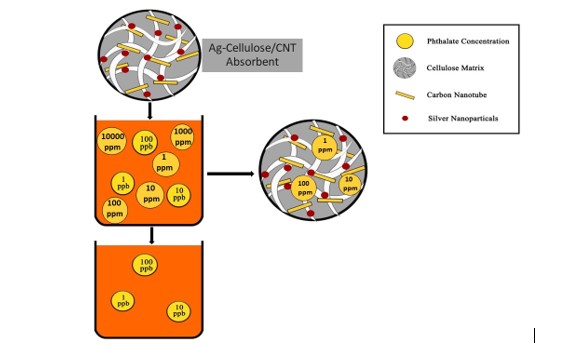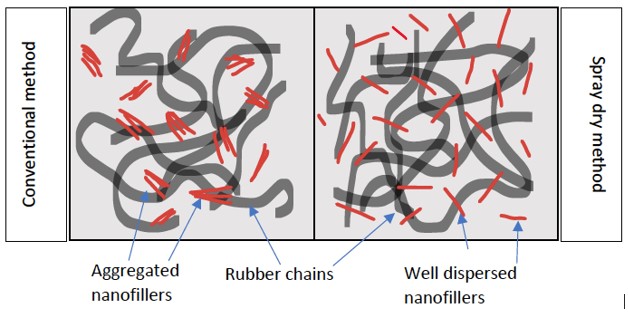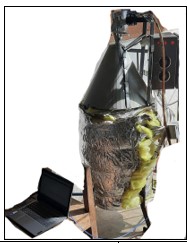Aromatic molecules are ubiquitous environmental pollutants, which show a significant threat to human health because of their hazardous nature. Currently, many research works focus on developing rapid molecular detection techniques compared to time-consuming conventional detection methods with complicated procedures. Recently we have introduced a technique for rapid detection of phthalates in solutions in which we have used carbon nanotube (CNT) buckypapers and CNT/cellulose composite membranes as an electrochemical sensing materials. However, they have a limitation of detecting phthalates in dilute solutions, which is great disadvantage. Therefore in this study, Silver (Ag) incorporated cellulose is used with CNT to develop a highly sensitive phthalate sensing material. Based on the studies carried out so far, this developed material shows potential for detecting down to 1 ppm (v/v) concentrated phthalates in solutions. Further studies on increasing the sensitivity of the developed phthalate sensing cellulose/CNT material and developing an easy-to-use, real-time, and in-situ phthalate sensor are to be done.
Manuscripts:
Anuchani, P.; Abeysinghe, H.; Etampawala, T.N.B.; Ag-nanoparticle Decorated Cellulose/CNT Composite for Detection of Aromatic Molecules, MRS Advances (Submitted, 2022)





